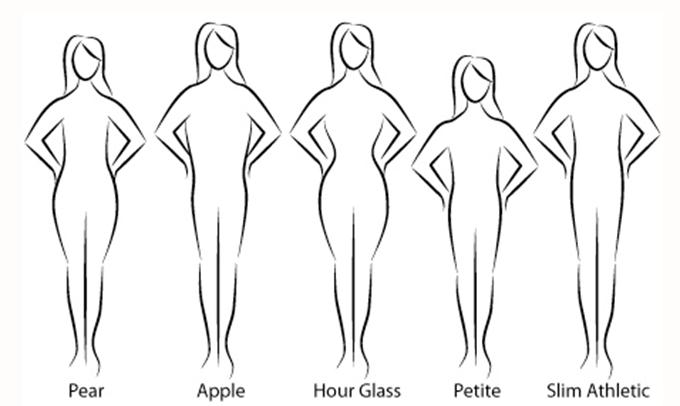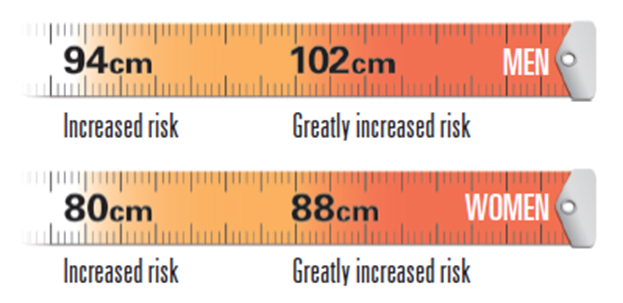|
SEARCH My Blog (Opens in new tab)
Up to 75% of lower extremity amputations are performed on diabeticsWhen it comes to health advice getting too much leads to indecision and inaction - we don't know what's best to do. For example:
Et cetera. It's confusing, isn't it? I've provided answers to those questions at the end of this post. I’ve had diabetes for 20+ years — I don’t want you to get it too! The focus of this post is to provide you with the answer to this one critical question: Question: What is an easy, reliable way to predict my chance of developing diabetes? This is diabetes, do everything in your power to avoid itFirstly let me explain diabetes. I have diabetes, and before I being diagnosed with it - 22 years ago - I did not have the slightest idea about the disease. I can tell you now, categorically, that you need to do everything in your power to avoid becoming diabetic. The purpose of this post is to give you a heads-up - a way to be alert to your chances of developing diabetes and then taking steps to avoid it. You have a strong chance of avoiding it if you take action. I didn't, you can. Type 1 and Type 2 diabetes explained. Type 1 affects 8% of everyone with diabetes - while Type 2 diabetes affects about 90%. In type 1 diabetes, symptoms are often sudden and can be life-threatening; therefore, it is usually diagnosed quite quickly. In type 2 diabetes, many people have no symptoms at all, while other signs can go unnoticed being seen as part of 'getting older'. I didn't take action because I did not understand the consequences of the disease. My doctor warned me two years before I was confirmed as being diabetic, but I thought that I'd be fine. I wasn't. If you are on the path heading towards diabetes you won't be fine either. That's why I wrote this post, to urge you to take action. Now. Not. Tomorrow. Or the next day. You don’t feel diabetes coming - if you do it's far far too lateDiabetes is a silent assassin - you feel fine. It is a gradual degeneration of your metabolism. If you are noticing or exhibiting symptoms of diabetes, then it is too late - your health has become hostage to it. Immediately after my doctor told me I had Type 2 diabetes I googled it. What I saw shocked me - I felt light-headed. I had to sit on the floor next to my desk and take a few deep breaths. Here's what Diabetes Australia says about the consequences:
COVID19 — High-risk, high death rate among diabeticsAdd to the above list, that diabetics are classified in a high-risk category for COVID19. The first study of COVID-19 patients with diabetes found that 10% died within seven days of hospital admission. Complications commonly associated with diabetes — eyes, kidneys, nerves, brain, heart legs — each “more than doubled the risk of death at day 7”. Exercise, while you canOne of the most effective ways to manage Type 2 diabetes is with proper exercise (diet is the other). If you suffer a limb amputation or blindness as a result of diabetes, then this severely constrains your ability to manage the disease, and thus the complications will multiply. Amputations reduce the quality of life and increase mortality [here and here] as well as having substantial medical costs. If you were not inclined to exercise with two legs you will be even less inclined when one is amputated. Exercise while you have two legs. UP TO 75% OF LOWER EXTREMITY AMPUTATIONS ARE PERFORMED ON DIABETICS - Research (2017) Here is your most effective at-home early-warning systemMeasuring your waist, unlike the grip test, is one of the easiest at-home health checks that you can do. And it can tell you much more about your health than standing on the scales. After all, when you think about it, weighing yourself tells you very little. It tells you nothing about your body composition and nothing about what risks you have from, say, fat deposits in high-risk areas (where you carry fat on your body is significant). On the other hand, a waist measurement gives you insights about the location of fat, and it has proven correlations with future health risks. This research (2012) concluded, "elevated waist circumference has clinical significance in predicting mortality risk beyond BMI". Waist circumference is associated with mortality riskWaist size is associated with the amount of intra-abdominal fat - that fat which builds about around our organs. This type of fat is what leads to health problems (so-called metabolic fat). A study (2012) of 4,252 men aged over 60, of whom 1456 died during the 10-year review, concluded that "waist circumference was significantly associated with cardiovascular mortality (over 102cm)".  Photo by Bob Fisher on Unsplash Photo by Bob Fisher on Unsplash Think of Sumo wrestlers. They look unhealthy, but in fact, they are super healthy. Their large mass of fat is subcutaneous fat, under their skin, not metabolic fat around their internal organs. Here are some facts about waist measurement:
It is important to note that a person can have a healthy BMI and have excess tummy fat. For example, in my case, I had a healthy BMI and only slight excess abdominal fat, and I still developed Type 2 diabetes. This study concluded, "adults with high waist circumference had higher all-cause mortality risk regardless of BMI status". The only way to tell precisely is to have a body scan, but a tape measure is far more convenient and far less expensive. Get out your measuring tape - right nowFor all the above reasons, it is essential to take your waist measurements periodically and keep a record. Here is the best method in five steps:
Checking the illustration above, you can see that if your measurement is over 80cm for women, and 94cm for men, then you are at increased risk of developing diabetes. If so, if your waist is in the increased risk zone, make an appointment with your health advisor. Then do this test below, and take this information as well. Here are the MOST IMPORTANT two measurementsFinally, the most important ratio that has caught my attention (since I was diagnosed with Type 2 diabetes) is the ratio of your waist measurement to your height. This research study (2019) concluded that "a waist-to-height ratio exceeding 0.5 at normal BMI identifies elevated mortality risk for cardiometabolic disease". If your height divided by your waist measurement is greater than 2 then you have an elevated risk of developing Type 2 diabetes. Take this seriously, because there is no cure for diabetes, and if poorly managed the consequences are dire. Body shape has consequences - research saysWith respect to body shape, it turns out that an Apple shape is associated with the highest risk to your health. Android or "apple" shaped bodies have been recognised as having a stronger association with obesity-related health risks than gynoid or "pear" shaped bodies. Obesity-related health risks include high blood pressure, imbalanced blood fats, and Type 2 diabetes and cardiovascular disease. You can do very little about your body shape, except to manage your diet and exercise to minimise the accumulation of excess metabolic fat. What can you do about your the risks associated with your body shape? In a recent research report and article "How Exercise Reduces Belly Fat in Humans" researcher Anne-Sophie Wedell-Neergaard of the University of Copenhagen, says this: "We all know that exercise promotes better health, and now we also know that regular exercise training reduces abdominal fat mass and thereby potentially also the risk of developing cardio-metabolic diseases". Simply put:
I've managed to keep mine under control with diet, and especially exercise (and especially resistance training). Diabetes will be with you for the rest of your life. Start exercising now for the rest of your life, and you'll live longer better. Your family will thank you. Good luck. > More posts to help you with EXERCISES > More posts to help you with DIABETES > If you are a @MEDIUM reader my publication Body Age Buster has hundreds of categorised posts which I have written especially for men and women over 50. Here's your answers to the opening questions:
Follow me on Quora for more health and fitness tips.
If you valued this article >> Follow me Leave a comment >> Share it >> Stay healthy If you have any questions email me and I will get back to you. Latest: get your free customised fitness plan designed uniquely for you.
|
ChoicesSince I was diagnosed at 50 with Type 2 diabetes I've been learning how to do bone-building fitness training which lowers my age. You can too. It's your choice. Walter Categories
All
Archives
May 2023
|


 RSS Feed
RSS Feed 


